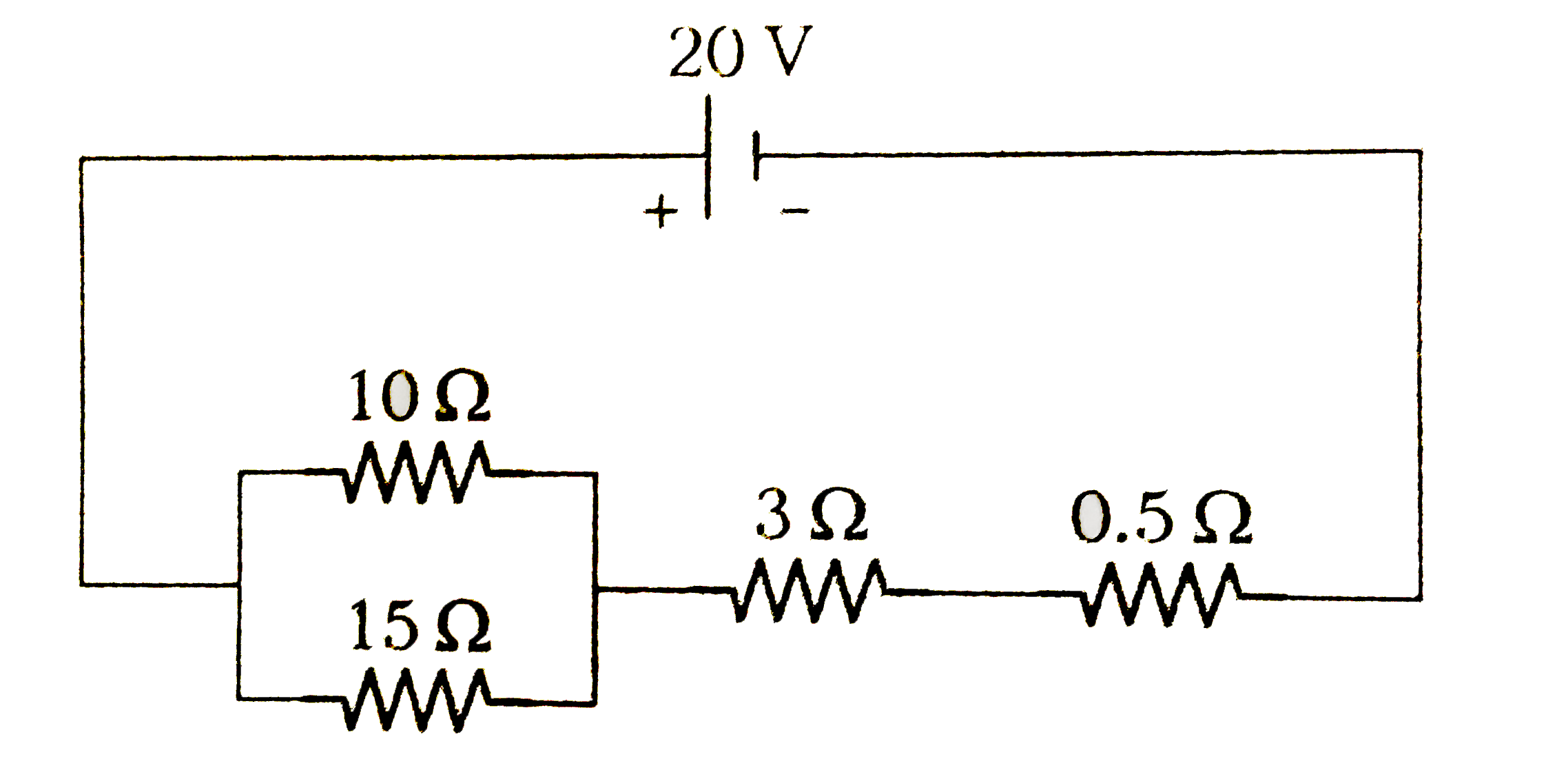If on applying the potential of 20V on a conductor its conductance becomes 8(Ω)−1, then the current flowing through it will be:
120A
160A
90A
80A
The correct Answer is:B
To find the current flowing through a conductor when a potential of 20V is applied and its conductance is given as 8Ω−1, we can follow these steps:
Step 1: Understand the relationship between conductance and resistance.
Conductance (G) is the reciprocal of resistance (R). Therefore, we can express this relationship as:
G=1R
Given that the conductance G=8Ω−1, we can find the resistance R as follows:
R=1G=18Ω
Step 2: Use Ohm's Law to find the current.
Ohm's Law states that:
V=I⋅R
Where:
- V is the voltage (20V in this case),
- I is the current we want to find,
- R is the resistance we calculated in Step 1.
Substituting the known values into Ohm's Law:
20V=I⋅(18Ω)
Step 3: Solve for the current I.
Rearranging the equation to solve for I:
I=VR=20V18Ω
This simplifies to:
I=20V⋅8=160A
Conclusion:
The current flowing through the conductor is 160A.
---
Conductance (G) is the reciprocal of resistance (R). Therefore, we can express this relationship as:
G=1R
Given that the conductance G=8Ω−1, we can find the resistance R as follows:
R=1G=18Ω
Ohm's Law states that:
V=I⋅R
Where:
- V is the voltage (20V in this case),
- I is the current we want to find,
- R is the resistance we calculated in Step 1.
20V=I⋅(18Ω)
Rearranging the equation to solve for I:
I=VR=20V18Ω
This simplifies to:
I=20V⋅8=160A
The current flowing through the conductor is 160A.
Topper's Solved these Questions
Similar Questions
Knowledge Check
A galvanic cell has electrical potential of 1.1 V . If an opposing potential of 1.1 V is applied to this cell, what will happen to the cell reaction and current flowing through the cell ?
AThe reaction stops and no current flows through the cell.BThe reaction continuous but current flows in opposite direction.CThe concentration of reactants becomes unity and current flows from cathode to anode.DThe cell does not function as a galvanic cell and zinc is deposited on zinc plate.
If the potential difference across the ends of a conductor is doubled, the current flowing through it gets
View SolutionCalculate the potential difference required across a conductor of resistance 5 Ω to pass a current of 1.5 A through it.
View SolutionIn the given circuit current flowing through 2 Omega resistance is
View SolutionA galvanic cell has an electrical potential of 1.1V. If an opposing potential of 1.1 V is applied to this cell, what will happen to the cell reaction and current flowing through the cell?
View SolutionA 100W bulb is connected to an AC source of 220V, 50Hz. Then the current flowing through the bulb is
View SolutionDoes a conductor become charged when a current is passed through it?
View SolutionA potential difference of 10 V is applied across a conductor of resistance 1kΩ. Find the number of electrons flowing through the conductor in 5 minutes.
View Solution


